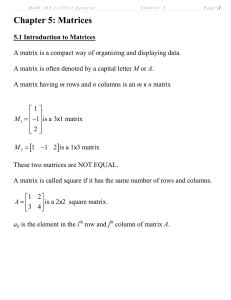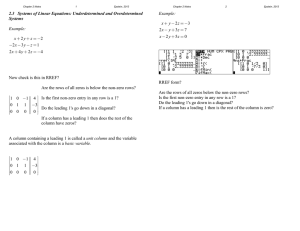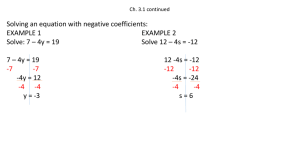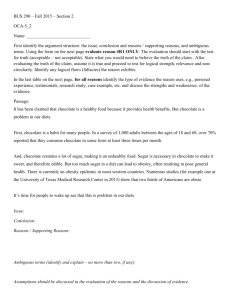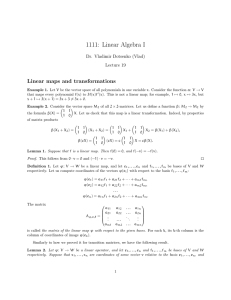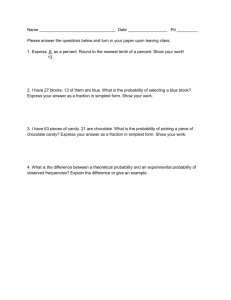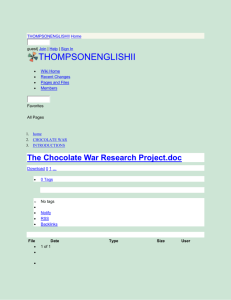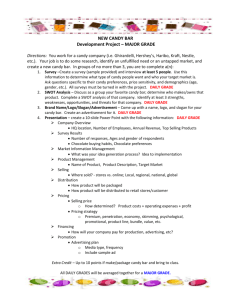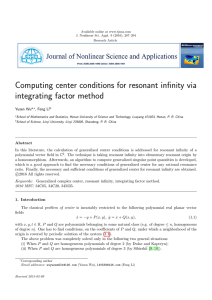Math 141 Review: Matrix Multiplication Examples
advertisement
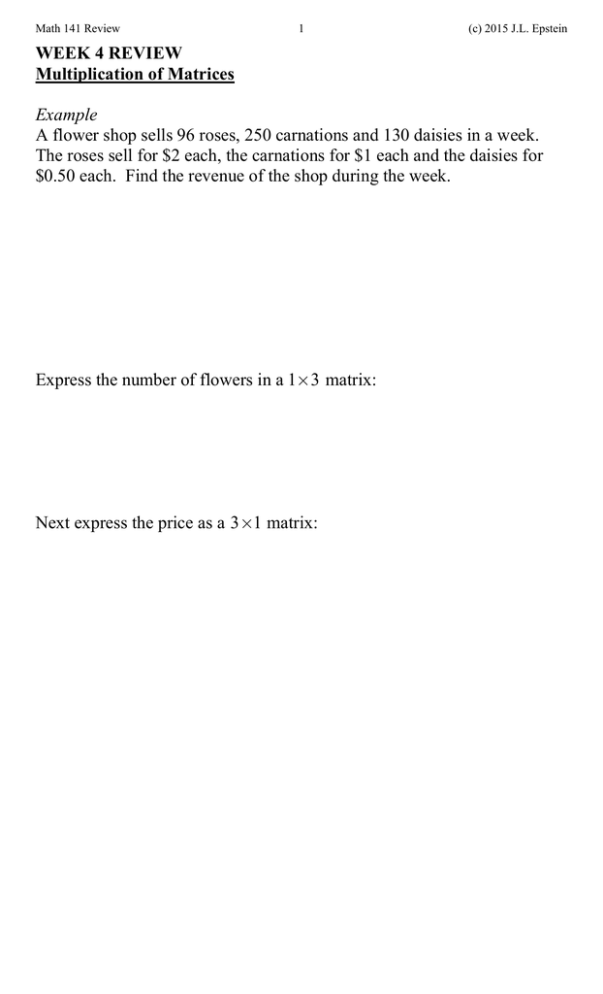
Math 141 Review 1 (c) 2015 J.L. Epstein WEEK 4 REVIEW Multiplication of Matrices Example A flower shop sells 96 roses, 250 carnations and 130 daisies in a week. The roses sell for $2 each, the carnations for $1 each and the daisies for $0.50 each. Find the revenue of the shop during the week. Express the number of flowers in a 1´ 3 matrix: Next express the price as a 3´1 matrix: Math 141 Review 2 (c) 2015 J.L. Epstein In general, if A is 1´ n and B is n´1, the product AB is a 1´1 matrix: A ⋅ B = [ a11 a12 é b11 ù ê ú êb12 ú a1n ]⋅ ê ú = [ a11 ⋅ b11 + a12 ⋅ b21 + + a1n ⋅ bn1 ] êú ê ú êêb úú ë n1 û If A is an m ´ n matrix and B is a n ´ p matrix, then the product matrix A ⋅ B = C is an m ´ p matrix. é a11 a12 a1n ù é b11 b12 ê ú ê ê a21 a22 a2 n ú êb21 b22 ú⋅ê A⋅ B = ê ê ú êê ê ú êê a amn úúû êêëbn1 bn 2 ë m1 am 2 b1 p ù ú b2 p ú ú ú ú bnp úúû é a11 ⋅ b11 + a12 ⋅ b21 + + a1n ⋅ bn1 (ab)12 ê ê (ab) 21 (ab) 22 ê =ê ê ê (ab) m1 ( ab) m 2 êë (ab)1 p ù ú (ab) 2 p ú ú ú ú (ab) mp ûúú Matrix multiplication is not commutative. In general, AB ¹ BA Example Find the products AB and BA where é 1 0ù é-1 2 ù ê ú ú A= and B = ê êë-2 3úû êë 0 -3úû Math 141 Review 3 (c) 2015 J.L. Epstein One special matrix is called the identity matrix, I. It is a square matrix with 1's on the diagonal and zeros elsewhere, é1 ê ê0 I=ê ê ê ê0 ë 0 0ù ú 1 0ú ú ú ú 0 1úû The identity matrix has the following properties: Matrix multiplication and linear equations: Example: Write the following system of linear equations as a matrix equation 2x 3y 6 x 2 y 4 Math 141 Review 4 (c) 2015 J.L. Epstein Example: Cost Analysis - The Mundo Candy Company makes three types of chocolate candy: cheery cherry (cc), mucho mocha (mm) and almond delight (ad). The candy is produced in San Diego (SD), Mexico City (MC) and Managua (Ma) using two main ingredients, sugar (S) and chocolate (C). Each kg of cheery cherry requires 0.5 kg of sugar and 0.2 kg of chocolate. Each kg of mucho mocha requires 0.4 kg of sugar and 0.3 kg of chocolate. Each kg of almond d. requires 0.3 kg of sugar and 0.3 kg of chocolate. (a) Put this information in a 2x3 matrix. (b) The cost of 1 kg of sugar is $3 in San Diego, $2 in Mexico City and $1 in Managua. The cost of 1 kg of chocolate is $3 in San Diego, $3 in Mexico City and $4 in Managua. Put this information into a matrix in such a way that when it is multiplied by the matrix in part (a) it will tell us the cost of producing each kind of candy in each city.
